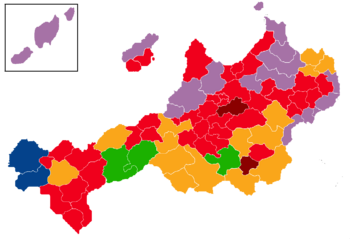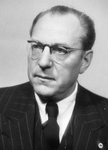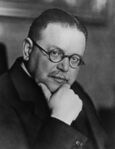1939 Weranian federal election: Difference between revisions
Britbong64 (talk | contribs) No edit summary |
Britbong64 (talk | contribs) |
||
| (2 intermediate revisions by the same user not shown) | |||
| Line 94: | Line 94: | ||
<!-- Map --> | <!-- Map --> | ||
| map_image = 1939 election map.png | | map_image = 1939 Weranian election map.png | ||
| map_size = 350px | | map_size = 350px | ||
| map_caption = | | map_caption = | ||
| Line 121: | Line 121: | ||
This uneven economic situation combined with slow progress on promised social reform had caused substantial political unrest in Werania. The combination of the removal of price controls and subsequent inflationary increase, continued poor working conditions and the failure to institutionalise a social contract between capital and labour caused constant left-wing agitation with the Weranian Federation of Workers' (Ostischer Arbeitsverband; OAV) and their political arm the [[Weranic Section of the Workers' International]] commonly held strikes in protest of the poor economic conditions and the political exclusion of socialists. | This uneven economic situation combined with slow progress on promised social reform had caused substantial political unrest in Werania. The combination of the removal of price controls and subsequent inflationary increase, continued poor working conditions and the failure to institutionalise a social contract between capital and labour caused constant left-wing agitation with the Weranian Federation of Workers' (Ostischer Arbeitsverband; OAV) and their political arm the [[Weranic Section of the Workers' International]] commonly held strikes in protest of the poor economic conditions and the political exclusion of socialists. | ||
On the right there was a sense that the end of the war and death of King Leopold IV had destroyed the national unity built up in the conflict due to machinations of revolutionary agitators. Many on the right saw the trickle of demobilised troops as the basis of a new political movement that would restore the ''{{wp|volksgemeinschaft}}'' and eliminate the radical left. The {{wp|völkisch movement}} began to gain popularity and influenced the politics of the Catholic | On the right there was a sense that the end of the war and death of King Leopold IV had destroyed the national unity built up in the conflict due to machinations of revolutionary agitators. Many on the right saw the trickle of demobilised troops as the basis of a new political movement that would restore the ''{{wp|volksgemeinschaft}}'' and eliminate the radical left. The {{wp|völkisch movement}} began to gain popularity and influenced the politics of the Catholic and Agrarian parties. The dominant figure in the Catholic party, [[Dietrich zu Kolbenheyer]], was apathetic to the continuation of the five-party government and became close to these reactionary movements. | ||
The [[Weranic Syndicalist Union]] had gained both popularity and notoriety due to the economic crisis. The party had through its paramilitary wing the ''Revolutionäre Kampfgruppen'' terrorised over political parties, in particular the OSAI. This had led to the creation of the OSAI-affiliated ''Volksschutzfront'' and conservative ''Soldaten des Reichsbanners'' all of which primarily came from demobilised servicemen. These paramilitary groups often engaged in street violence leading to an atmosphere of chaos in the country. The OSU exploited this to position themselves as the only party capable of restoring order through its revolutionary nationalism. | |||
The unstable economic situation and deteriorating political stability caused tension in the five-party government. In January 1939 the government proposed wage restraint across most sectors of the economy in line with the governments incomes policy causing strikes across the country and heated opposition in the Bundestag. With the policy looking unlikely to pass in the legislature and exhausted by the political and economic turmoil premier Blumentritt announced the resignation of his entire cabinet requesting to the monarch for the dissolution of the House of Deputies for an election for the 14 March. | The unstable economic situation and deteriorating political stability caused tension in the five-party government. In January 1939 the government proposed wage restraint across most sectors of the economy in line with the governments incomes policy causing strikes across the country and heated opposition in the Bundestag. With the policy looking unlikely to pass in the legislature and exhausted by the political and economic turmoil premier Blumentritt announced the resignation of his entire cabinet requesting to the monarch for the dissolution of the House of Deputies for an election for the 14 March. | ||
==Parties== | ==Parties== | ||
{| class=wikitable style=text-align:left | {| class=wikitable style=text-align:left | ||
| Line 170: | Line 173: | ||
|rowspan=3| {{wp|Centre-right}} | |rowspan=3| {{wp|Centre-right}} | ||
| style="background:#1BB100" | | | style="background:#1BB100" | | ||
| [[File: | | [[File:RSZML clover, 1925 version.svg|50px]] | ||
| [[Centre Party (Werania)|Landbund]] | | [[Centre Party (Werania)|Landbund]] | ||
| {{wp|Agrarianism}}, {{wp|Populism}} | | {{wp|Agrarianism}}, {{wp|Populism}} | ||
Latest revision as of 00:23, 25 June 2023
| |||||||||||||||||||||||||||||||||||||||||||||||||||||||||||||||||||||||||||||||||||||
All 584 seats to the House of Deputies 292 seats are needed for a majority in the House of Deputies | |||||||||||||||||||||||||||||||||||||||||||||||||||||||||||||||||||||||||||||||||||||
|---|---|---|---|---|---|---|---|---|---|---|---|---|---|---|---|---|---|---|---|---|---|---|---|---|---|---|---|---|---|---|---|---|---|---|---|---|---|---|---|---|---|---|---|---|---|---|---|---|---|---|---|---|---|---|---|---|---|---|---|---|---|---|---|---|---|---|---|---|---|---|---|---|---|---|---|---|---|---|---|---|---|---|---|---|---|
| Turnout | 16,117,435 (79.81%) | ||||||||||||||||||||||||||||||||||||||||||||||||||||||||||||||||||||||||||||||||||||
| |||||||||||||||||||||||||||||||||||||||||||||||||||||||||||||||||||||||||||||||||||||
 | |||||||||||||||||||||||||||||||||||||||||||||||||||||||||||||||||||||||||||||||||||||
| |||||||||||||||||||||||||||||||||||||||||||||||||||||||||||||||||||||||||||||||||||||
The 23rd federal election was held in the Weranian Confederation for the House of Deputies (the lower house of the Bundestag) on the 14th March 1939. All 584 members of the House of Deputies were elected under a system of proportional representation with each regierungsbezirke treated as an electoral districts. These would be the second elections held following the Great War after the expiration of the term of the House of Deputies.
The election came as the country suffered from an inflationary spiral in the post-war period triggered by the devaluation of the mark and the removal of wartime price controls. The outgoing centrist government of the Landbund, Radical, Catholic Social, Social Democratic and National Liberal parties led by KSP leader Gustav Blumentritt was unpopular with its slim parliamentary majority making it increasingly ineffective in passing legislation. In January a dispute over planned wage cuts in line with the government's incomes policy led to the entire Blumentritt cabinet to resign triggering an election to be held a month ahead of schedule.
Persistent economic woes, labour disputes and social polarisation had caused the Weranic Syndicalist Union to raise in popularity. The OSU made up of many demobilised service men had a reputation for engaging in paramilitary violence which was reciprocated by the OSAI and the conservatives. The 1939 elections were the most violent held in Werania in modern times with fighting between party paramiliataries being common.
The election saw the OSAI and the centrist parties lose seats. The OSU became the third largest party making it a powerful force in the legislature. The Ruttish Sotirian Democratic Party entered the Bundestag for the first time and the Catholic Social Party re-emerged as the largest non-socialist party. As a result the five party coalition continued its mandate under the Radical Party leadership of Hans Doblhoff-Dier under a 4 seat majority.
Electoral process
The election was held using a system of proportional repsentation that had been introduced in 1905. The country had 76 electoral districts based on the regierungsbezirke with no electoral threshold. Seat totals were calculated via the greatest divisors method.
Background
The previous election had been held in 1935 shortly after the conclusion of the Great War. The five party government that had led Werania since 1922 consisting of the Social Democrats, the Radicals, the Agrarians, Radicals, the Catholics and the National Liberals was reformed under the wartime premier Otto Röttgen. Röttgen and King Leopold IV had an ambitious programme of reform that sought to reshape Weranian politics but the assassination of Leopold IV in September 1936 and Röttgen's resignation five months later led to the reform programme to halt under premier Gustav Blumentritt who focused on the immediate economic troubles in Werania.
The end of the war had not led to demobilisation as had been hoped with thousands of Weranian servicemen continuing to be stationed in occupied-Gaullica. Although rationing had been increasingly phased out since 1936 prices shortages were common. A combination of a reliance on war bonds to finance the war effort and high government borrowing in the post-war reconstruction had caused inflation. Devaluation of the mark was considered as nessecary to increase the competitiveness of exports and inflation needed to reduce the debt burden. However although this caused an increase of real incomes inflation soon outstripped it after the government removed the majority of wartime price controls causing inflation to massively increase.
This uneven economic situation combined with slow progress on promised social reform had caused substantial political unrest in Werania. The combination of the removal of price controls and subsequent inflationary increase, continued poor working conditions and the failure to institutionalise a social contract between capital and labour caused constant left-wing agitation with the Weranian Federation of Workers' (Ostischer Arbeitsverband; OAV) and their political arm the Weranic Section of the Workers' International commonly held strikes in protest of the poor economic conditions and the political exclusion of socialists.
On the right there was a sense that the end of the war and death of King Leopold IV had destroyed the national unity built up in the conflict due to machinations of revolutionary agitators. Many on the right saw the trickle of demobilised troops as the basis of a new political movement that would restore the volksgemeinschaft and eliminate the radical left. The völkisch movement began to gain popularity and influenced the politics of the Catholic and Agrarian parties. The dominant figure in the Catholic party, Dietrich zu Kolbenheyer, was apathetic to the continuation of the five-party government and became close to these reactionary movements.
The Weranic Syndicalist Union had gained both popularity and notoriety due to the economic crisis. The party had through its paramilitary wing the Revolutionäre Kampfgruppen terrorised over political parties, in particular the OSAI. This had led to the creation of the OSAI-affiliated Volksschutzfront and conservative Soldaten des Reichsbanners all of which primarily came from demobilised servicemen. These paramilitary groups often engaged in street violence leading to an atmosphere of chaos in the country. The OSU exploited this to position themselves as the only party capable of restoring order through its revolutionary nationalism.
The unstable economic situation and deteriorating political stability caused tension in the five-party government. In January 1939 the government proposed wage restraint across most sectors of the economy in line with the governments incomes policy causing strikes across the country and heated opposition in the Bundestag. With the policy looking unlikely to pass in the legislature and exhausted by the political and economic turmoil premier Blumentritt announced the resignation of his entire cabinet requesting to the monarch for the dissolution of the House of Deputies for an election for the 14 March.
Parties
| Affiliation | Party | Ideology | Spitzenkandidat | 1925 result | In government | ||
|---|---|---|---|---|---|---|---|
| Left | 
|
Weranic Syndicalist Union | National syndicalism, Revolutionary nationalism | Siegfried Höcker | 38 / 584
|
||

|
Weranic Section of the Workers' International | Socialism, Revolutionary socialism | Lothar Gotthold | 224 / 584
|
|||
| Centre-left | 
|
Social Democratic Party of Werania | Social democracy, Reformism | Jochen Kammerer | 56 / 584
|
||

|
Radical Party | Radicalism, Anti-clericalism | Adalbert Nischwitz | 80 / 584
|
|||
| Centre-right | Landbund | Agrarianism, Populism | Thomas Bechtold | 54 / 584
|
|||
| National Liberal Party | National Liberalism, Classical liberalism | Elmar Künneth | 53 / 584
|
||||

|
Ruttish Sotirian Democratic Party | Ruttish regionalism, Sotirian Democracy | N/A[a 1] | 0 / 584
|
|||
| Right | 
|
Catholic Social Party | Political Catholicism, Sotirian Democracy | Gustav Blumentritt | 79 / 584
|
||
Campaign
Results
| Party | Votes | % | Seats | +/− | |
|---|---|---|---|---|---|
| Weranic Section of the Workers' International | 5,267,582 | 32.95 | 200 | -24 | |
| Catholic Social Party | 2,668,317 | 16.69 | 101 | +22 | |
| Weranic Syndicalist Union | 1,858,573 | 11.63 | 70 | +32 | |
| Radical Party | 1,457,935 | 9.12 | 55 | -25 | |
| Rural Federation | 1,268,317 | 8.56 | 52 | -2 | |
| Social Democratic Party of Werania | 1,206,849 | 7.55 | 45 | -11 | |
| National Liberal Party | 1,149,584 | 7.19 | 43 | −10 | |
| Ruttish Sotirian Democratic Party | 475,804 | 2.98 | 18 | +18 | |
| Others | 284,739 | 1.77 | 0 | - | |
| Invalid/blank votes | 248,052 | – | – | – | |
| Total | 15,985,752 | 100 | 584 | ±0 | |
| Registered voters/turnout | 20,195,832 | 79.15 | – | – | |
Aftermath
Outcome
Government formation
- ↑ The SDT did not nominate a spitzenkandidat.






